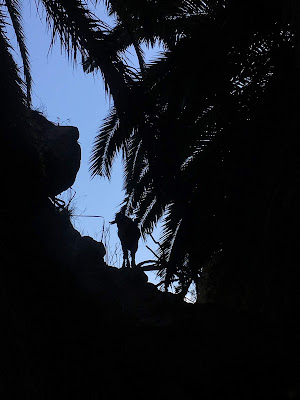Well! I’ve officially been in Spain and living on La Gomera for over one month (????!!!!!!!!!!), so it’s probably about time for me to write some posts about what the hell I’m actually doing here (teaching). When I was just an applicant stalking Fulbright blogs, I sometimes wondered why there was so little content about the actual teaching experience. I think I know why now—for starters, there’s a lot going on outside of work. So many side missions, cultural quirks, and thoughts about transition are also vying for space in my mind. I didn’t just start a new job—I started a new life (this sounds incredibly navel-gazey, but it’s true). Really, the Fulbright experience encompasses all spheres—professional, social, and private—and it’s unrealistic to expect one of those to outweigh the others. #MÁSqueunabeca
me thinking deep thoughts !!
|
Another challenge involved in blogging about teaching is that every day is entirely different. I had a nice and tidy mental summary of my first day all ready to roll, and then the sun set and rose again and I had a completely different experience. Finding a way to corral all of the unique experiences and emotions is really difficult. However, after a month on the job, I think my sample size of days is starting to inch toward “respectable”, so I’m going to give it a whirl.
Here's a picture a fellow teacher took of me on my first full day in infantil classes. Not pictured: marker stains on my pants
|
In this post, I’ll start with the facts. I am assigned to teach English to infantil and primaria students at the only school in the Valle Gran Rey municipality. The school is small, but hosts students anywhere between the ages of 3 and ~16 years old, mostly from La Gomera but also from other islands and many different countries (Germany, Italy, Moldova, Venezuela, Cuba, etc) thanks to tourism. In Spain, children can basically start attending school straight out of the womb, but this of course depends on resources and availability. In this area, students officially start in infantil around age 3, move to primaria at age 6, and then to secundaria when they’re 12. After they finish four years in secundaria, they’re done with obligatory education, but the next step for many is bachillerato and then universidad. It’s a really interesting feeling to return to the beginning of the process after just crossing the finish line in my own education. I’m teaching ages 3 through 12 every week, and my youngest students are still a few years out from reading. I look at them and wonder if they’ll be pulling all-nighters to finish research papers in ~16 years.
The school is charming, built around an open-air patio where all of the students have recreo (recess) together. A map of the islands is painted on the ground, and plants and student garden projects line the perimeter. The classrooms have big windows and balconies with a casual ocean view, and the walls are painted daffodil yellow. The students I teach begin class at 8:30 am and leave around 1:30 pm, with a ~45 minute break in the middle for lunch and recess. Factoring in my long bus rides, my days in elementary school were about twice as long.
The hub of activity for teachers is, of course, la sala de profesores. I was told ahead of time that Spain takes teachers’ lounges seriously, and it’s true. Every teacher in the school must enter the room at least twice a day to sign in and out, but it’s also the only place in the building to get coffee, print, and store personal belongings and classroom materials. My favorite part is the community snack tin that always has an assortment of my new addiction: Gomeran cookies (more on these later). There are always people in the lounge, and it’s an unspoken cultural rule that anyone entering should always announce themselves with a greeting. Generally, when starting a new job, my approach is to be quiet as a mouse until I feel comfortable (former co-workers reading this will laugh), so this initially made me nervous. But I have to say, after spending an evening alone, it’s really nice to walk in the next day and receive a chorus of “buenos días!”
The teachers at my school have been incredibly welcoming to me, and I feel very lucky to be a part of their cohort. I didn’t know this until recently, but small islands like La Gomera have a high teacher turnover rate because of A. isolated location and B. Spain’s requirements for tenured positions—at the end of every year, all teachers vying for a plaza fija (fixed position) must take the infamously difficult oposiciones (exams), and if they don’t do well, they’re sent to another school. I started at the school a week later than everyone else, so by the time I arrived, people knew each other and were relatively settled in. Little did I know, all but ~3 infantil and primaria teachers were also new to La Gomera! Many of them are Canarians in their mid-to-late twenties, and already have a group chat to announce plans for things like dinner and drinks. This dynamic is my saving grace—La Gomera does not have a university, so there are very, very few people my age around town. But because all of these teachers are new and looking to make friends just like I am, they’ll put up with my stuttering Spanish and pesky kid-sister vibes for the sake of companionship. I love them already.
Snapshot from a typical Wednesday night spent poolside with my coworkers
|
Next up: my classroom experience!



























